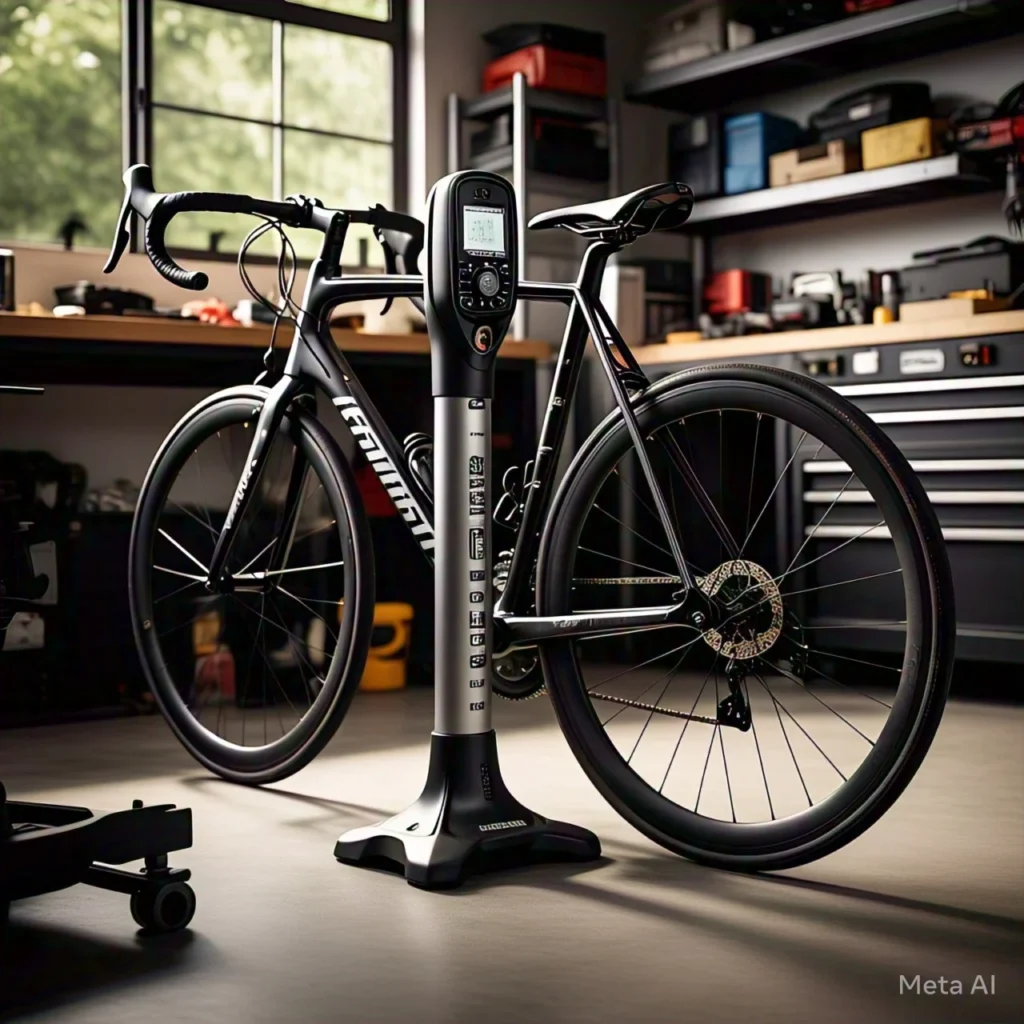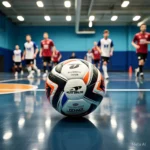Every cyclist should have a cycle pump at any given period since they are crucial in ensuring your bicycle’s tires are well inflated at all times. Inflation of tires reduces the occasions of getting a punctured tire and gives better traction to the automobile. Although one will find portable bike pumps, foot pumps, hand pumps, and high-pressure cycle pumps it is quite a challenge to know which one is the most suitable.
On this page, you can learn about the best cycle pumps, their characteristics, advantages and disadvantages, and some tips on choosing such a device. Whether you are in search of a bike pump that will be kept at home or a portable bike pump that you can use in case you run out of pumps on your bicycle, this piece will assist you in making the right decision.
Why Do You Need a Cycle Pump?
It is an excellent exercise, and also has an adrenaline rush; however, having the wrong pressure in the tires can affect the bicycle’s performing capability including increased rolling resistance or harming the rims. It is worth mentioning that a high-quality cycle pump can be of great benefit in:
- Maintain the right tire pressure for a smooth and safe ride.
- Do not allow your tires to get underinflated since this can lead to punctures and even blowouts.
- Adjusting the riding gimbal will make less force to be applied while pedaling.
- Reduce wear and tear of your tires, thus reducing every expense on replacement in the future.
You will now proceed to know the various kinds of cycle pumps that you need to know about Now that you know the reason why a cycle pump is necessary.
Types of Cycle Pumps
It is worth noting that there are different types of cycle pumps, depending on the cycling activity that one intends to undertake. To ease understanding the most frequently reported types are as follows:
1. Floor Pumps (Track Pumps)
A floor pump is a cycle pump with quite high ratings and is built specifically for rapid inflation. It is best for home use and has a wonderful airflow, along with exact pressure that surpasses the control standard.
- Suitable for home use, casual cycling indoors, and for people who require high-pressure cycling.
- Pros: Greater inflation, high-pressure capability, and pressure gauge integrated within the body.
- Cons: It cannot be moved from one place to another; it occupies space.
2. Hand Pump for Cycles
A hand pump is light and small enough that you can take with you on a ride and will not be too much of a burden. It is convenient and suitable for tire inflation to a certain extent, but using it to achieve higher pressure involves a certain level of effort.
- In practical use: Emergency situation repairs, road trips, organizing a single item in everyday carry, and minimalistic travel packing.
- Advantages: Compact and lightweight, thus can easily be carried from one point to another.
- Cons: It requires one to spend more time to inflate the tires, and the process is relatively slower compared to floor pumps.
3. Foot Pump for Bicycles
For more information, a foot pump could be said to be better than a hand pump in that you do not use your hands in the exercise but your feet. This makes everything less tiring and time is to be used efficiently.
- Best for: For cyclists who want a compromise of fold-ability and non-flows with their bikes.
- Advantages: Less challenging than hand pumps, better regulation of the air pressure.
- Cons: Heavier than hand pumps and may not slip into small handbags if they are used.
4. Portable Bike Pump
A portable bike pump is a miniature of floor or hand pump which can be mounted on the bike frame or taken in the backpack. However, this is beneficial especially when it’s used on a long journey or when there is an emergency.
- Suits: touring, bike packing, and cross-country riding.
- Pros: Small, lightweight, and convenient for travel.
- Cons: Slower inflation, lower pressure capacity.
5. CO₂ Inflators
These make use of compressed CO₂ gas cartridges which inflate the tires in a short span of time. It is very fast but is lightweight and could function best with its replaced cartridges.
- Best for: Racers, professionals especially cyclists, and emergencies.
- Pros: Fastest inflation method, extremely lightweight.
- Advantages: The cartridges have to be replaced, not suitable for production use.
Key Features to Consider When Buying a Cycle Pump
.
There are several factors that one needs to have in mind so that he/she can acquire the right cycle pump that is right for him/her.
1. Valve Compatibility
There are two important types of bike valves, namely Presta and Schrader. Whereas, some pumps can support both forms while others are mainly designed to support either of them. Ensure that the gadgets are suitable for use with the bike’s valve type as pump sizes may vary.
2. Maximum Pressure (PSI/BAR)
Each bicycle uses a tire that has a different pressure according to the designs put in place. For example:
- Road bikes need 80-130 PSI
- Mountain bikes need 30-50 PSI
- Hybrid bikes need 50-80 PSI
There is a high-pressure cycle pump for road bikes and low pressure for mountain or hybrid bikes.
3. Size & Portability
- For home use: For home use, a floor pump is advisable since it is very easy to use and does not require any batteries.
- For travel: It is advisable to use a hand pump or a portable bike pump.
- For racing or during quick inflation: An inflator that uses CO2 is ideal.
4. Built-in Pressure Gauge
A built-in gauge, for example, will ensure you do not over or under-inflate the tire, which would be bad for the tire.
5. Build Quality & Durability
Choose pumps that are made of metal or strengthened plastic to prolong their use to the maximum.
Top 5 Best Cycle Pumps in 2024
1. Topeak Joe Blow Sport III – Best Floor Pump
- Pros: Durable, high-pressure, accurate gauge.
- Cons: Not portable.
2. Vibrelli Mini Bike Pump – Best Hand Pump
- Pros: Compact, lightweight, dual valve compatibility.
- Cons: More time-consuming than convenient as it takes time to inflate.
3. BV Bicycle Ergonomic Foot Pump – Best Foot Pump
- Advantages: convenience, properly designed, suitable for all types of bicycles.
- Cons: Slightly bulky.
4. Lezyne Pressure Drive – Best Portable Bike Pump
- Pros: Sleek design, high efficiency.
- Cons: Small size means more pumping effort.
5. Pro Bike Tool CO₂ Inflator – Best for Emergency Use
- Pros: Extremely fast, ultra-lightweight.
- Cons: Requires extra CO₂ cartridges.
How to Properly Use a Cycle Pump
Step 1: Check Your Tire Pressure
Check the recommended PSI indicated at the side of the tire and then inflate to the recommended PSI.
Step 2: Attach the Pump to the Valve
In step two, there will be the connection of the pump to the valve where the pump will be connected to the valve for pumping diesel while the petrol will be pumped using another valve.
Check that you are using the right type of valve that you are using which is either the Presta or the Schrader valve.
Step 3: Start Pumping
About the specific technique of operating a floor pump, it is best to basically keep it even. For a hand pump, it may take longer; there is, therefore, a need to allow enough time for that.
Step 4: Monitor the Pressure Gauge
Evaluations: this shows that once the required pressure has been achieved, pumping has to come to an end.
Step 5: Remove the Pump & Close the Valve
Remove the pump gently and ensure that the valve cap has been put in place.
Conclusion: Which Cycle Pump Should You Choose
The best cycle pump must be determined depending on the cycling practices that you are advised to stick to:
Here are the types of tire pumps:
- High-pressure floor pump: If you desire fast and swift inflation of your tire without much effort, you should pull this one.
- If you are in need of a type that is somewhat flexible, then a hand pump or portable bike pump is advisable.
- Although there are minor limitations on both sides of the range, a foot pump for bicycles lies in the medium level of power and reasonable size.
- For a racer, there is no time to waste and therefore, a CO₂ inflator will be perfect for the task.
Keeping a good cycle pump means that you are sure of the right tire pressure during a ride thus making your cycling safe and enjoyable. It is a good thing to purchase the perfect cycle pump before you experience a flat which may lead to learning the hard way of having to buy the incorrect item.





